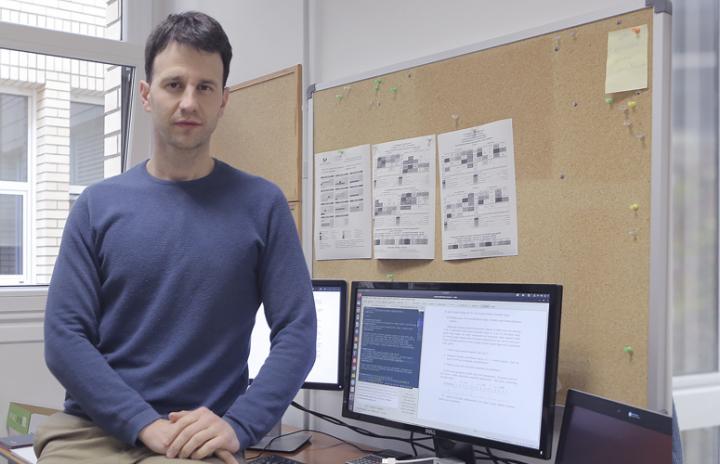The University of the Basque Country (UPV/EHU) is using language processing techniques to represent sensors and human activity in smart environment

Credit: UPV/EHU
The aim of smart homes is to make life easier for those living in them. Applications for environment-aided daily life may have a major social impact, fostering active ageing and enabling older adults to remain independent for longer. One of the keys to smart homes is the system’s ability to deduce the human activities taking place. To this end, different types of sensors are used to detect the changes triggered by inhabitants in this environment (turning lights on and off, opening and closing doors, etc.).
Normally, the information generated by these sensors is processed using data analysis methods, and the most successful systems are based on supervised learning techniques (i.e., knowledge), with someone supervising the data and an algorithm automatically learning the meaning. Nevertheless, one of the main problems with smart homes is that a system trained in one environment is not valid in another one: ‘Algorithms are usually closely linked to a specific smart environment, to the types of sensor existing in that environment and their configuration, as well as to the concrete habits of one individual. The algorithm learns all this easily, but is then unable to transfer it to a different environment,’ explains Gorka Azkune, a member of the UPV/EHU’s IXA group.
Giving sensors names
To date, sensors have been identified using numbers, meaning that ‘they lost any meaning they may have had,’ continues Dr Azkune. ‘We propose using sensor names instead of identifiers, to enable their meaning, their semantics, to be used to determine the activity to which they are linked. Thus, what the algorithm learns in one environment may be valid in a different one, even if the sensors are not the same, because their semantics are similar. This is why we use natural language processing techniques.’
The researcher also explains that the techniques used are totally automatic. ‘At the end of the day, the algorithm learns the words first and then the representation that we develop using those words. There is no human intervention. This is important from the perspective of scalability, since it has been proven to overcome the aforementioned difficulty.’ Indeed, the new approach has achieved similar results to those obtained using the knowledge-based method.
Complementary information
This study was carried out by the IXA research group at the UPV/EHU, in collaboration with the DeustoTech Institute of Technology at Deusto University.
###
Media Contact
Matxalen Sotillo
[email protected]
Original Source
https:/
Related Journal Article
http://dx.




